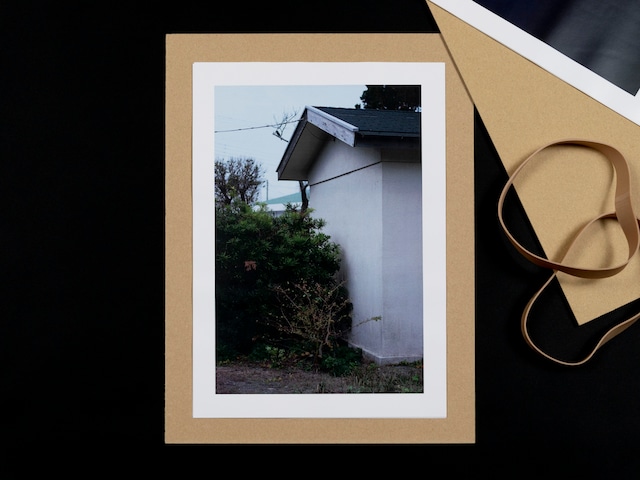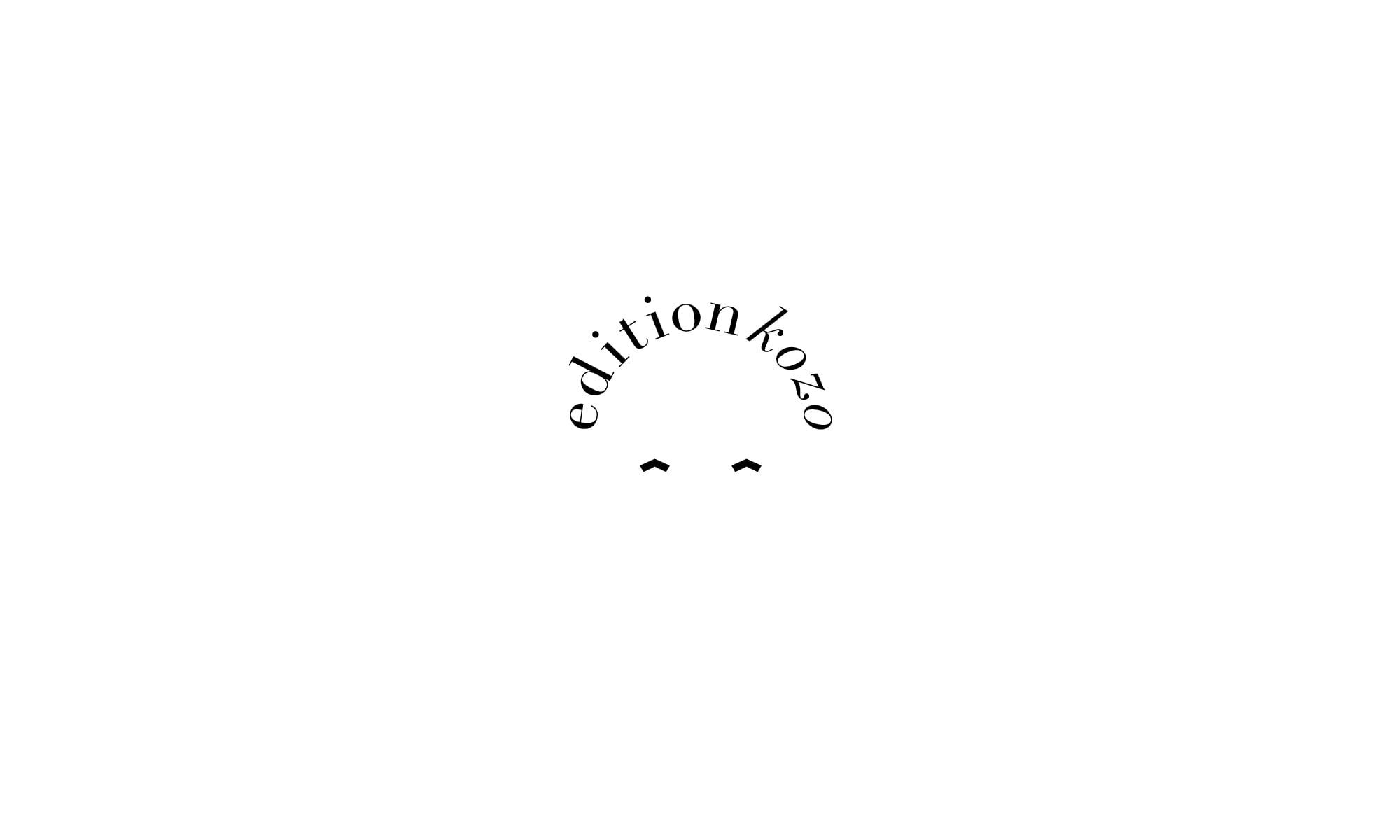-

Momoko Tanizaki, INSOMNIA / Waiting for the wave
¥4,950
アーティスト谷崎桃子によるパンデミック以降に制作した「不眠や不調」をモチーフにした絵画作品で構成されたアートブック。 谷崎は、間接的なコミュニケーションが広がる現代に対峙するかのように、絵画という直接的に身体を介する表現方法を主に用いて、人間の感情や他者との関係性を提示する作品を発表してきました。取るに足らない生活の中の風景や愛情を主に表現してきましたが、近年は言うにはばかる病的な感情や、人間のネガティブと言われる部分をありのまま表現することで、それらを肯定的に捉える可能性を絵画を通じて模索しています。 - 内容物:スリーブ/大型冊子_22ページ(絵画作品掲載)/テキストカード_1枚(日英バイリンガル) スリーブ外寸:400 x 520mm 初版50部 This art book consists of paintings created by artist Momoko Tanizaki after the pandemic, using “insomnia and disorder” as a motif. Tanizaki has been presenting works that present human emotions and relationships with others, mainly using painting as a method of expression that directly involves the body, as if to confront the spread of indirect communication today. While Tanizaki has mainly depicted insignificant scenes of daily life and affection, in recent years he has been exploring the possibility of capturing morbid emotions and negative aspects of human nature in a positive light by expressing them as they really are. - Contents: Sleeve / Large booklet_22 pages (with paintings) / 1 text card (bilingual (English/Japanese)) Sleeve outside dimensions: 400 x 520mm First edition: 50 copies
-

FM (#1 2,2022)
¥2,420
FMは“分からないファッション誌”です。 FMはファッションが内包する “分からなさ” について様々な観点から考察を行っています。初回の特集は「外出」、写真家 濱田晋さんによる写真と、テキスト・テキスタイルのデザイン・製造・販売等を行う「TEXT」主催 大江ようさんによる寄稿文を掲載しています。 - サイズ(スリーブケース):w220 x h240mm FM is a “ambiguous fashion magazine”. FM examines the “ ambiguous” that fashion encompasses from a variety of perspectives. The first issue features “Going Out,” with photographs by Shin Hamada and a contribution by Yo Ooe, organizer of TEXT, which designs, manufactures, and sells textiles. - Size (sleeve case): w220 x h240 mm
-

『天地を掘っていく』角尾宣信 |『Dove / かわいい人』村田冬実 Waiting for you by Yoshinobu Tsunoo|HATO / Charming Person by Fuyumi Murata
¥6,600
映画史研究者角尾宣信氏による、令和への改元と天皇制、また日本人であることについて、往年の映画監督渋谷実氏の作品を通した論考と、その論考から発想したアーティスト村田冬実氏による写真作品及びその展示記録集からなる共編書。分厚い本文カード、ポスター、写真集、ばらばらと散らばった図版等、複数の内容物が箱の中で積層した装幀となっています。 – 内容物:本文カード_28p(日英バイリンガル) / 図版カード_28枚(日英バイリンガル) / 写真_12p / ポスター / 綿 / 透明表紙 / 箱 箱外形:221 x 308 x 42 mm 初版200部 Co-edited book by film historian Yoshinobu Tsunoo, which consists of a study of the change to the Japanese Reiwa era, the emperor system, and being Japanese through the works of old film director Minoru Shibuya. And a collection of photographs and exhibition records by artist Fuyumi Murata inspired by the study. - Contents: text card_28p (bilingual) / image card_28 (bilingual) / photo_12p / poster / cotton / transparent cover / box Box dimensions: 221 x 308 x 42 mm First edition of 200
-

『The Group Exhibition at Satoshi Ohno Studio 2018』
¥2,750
2018年8月に山梨県富士吉田市にて行われた画家の大野智史によるアトリエの公開とグループ展示のドキュメントブック。大野を含めた7人のアーティスト(福永大介、大田黒衣美、谷崎桃子、吉田裕亮、富田正宣、郷治竜之介)による10日間の展示を豊富な写真で紹介。美術批評家大森俊克によるテキストも収録。 本展示から抽出された「身体性」と「境界のあいまいさ」という2つのキーワードをヒントにデザインされています。書籍における「天・地」や「ノド・小口」といった物理的・身体的な制約を踏まえ、写真のレイアウトは各々のページで天地左右が不均一で、読者に対して身体的な反応を要求するデザインとなっています。各ページの端部とノドといった物理的な境界を前提としない写真のレイアウトによって境界の曖昧化を試みています。製本においても針や糊を使用せず、それぞれのページが入れ替え可能となっており、会場内での鑑賞者による非限定的な視線や動線の流れを再現しています。 Document book of an open studio and group exhibition by painter Satoshi Ohno that took place in August 2018 in Fujiyoshida, Yamanashi, Japan. The 10-days exhibition by seven artists (Daisuke Fukunaga, Emi Otaguro, Momoko Tanizaki, Yusuke Yoshida, Masanobu Tomita, and Ryunosuke Goji), including Ohno, is presented with abundant photographs. Text by art critic Toshikatsu Omori is also included.
-

『岩、紙、風』濱田晋 A Rock, A Paper, A Wind by Shin Hamada
¥6,600
風景や人物など、それぞれの写真に関連があるのかはっきりとしない断片的な光景を20枚収めた写真家の濱田晋による写真集兼写真作品。画家の森本将平による寄稿文も収録。100部限定。サイン入り。 - 「顔も名前も、性別も年齢も、沖縄に来た理由もエレベーターに乗った目的も、まったく何もわからない、知らない誰かが、たまたまあるホテルのある階のあるエレベーターに乗り込むその一瞬を、私は、夜の街を歩いているときにたまたま目にした。そのことは、私しか知らない。」—– 岸政彦「断片的なものの社会学」(引用) - 本書は、濱田晋氏の関心「物事の断片性」をキーワードにデザインされ、製本は針や接着剤などを用いず結束出来る方法を選択し、各々の構成要素が独立する構造になっています。要素としての断片性を強める目的から表紙、本文と使用する用紙についてもそれぞれ質感や厚みに差がつけられ、タイポグラフィは日英それぞれの言語における断片性が意味と造形において解釈されています。「そこにあるものをただ見る」という著者の被写体に対する感覚を追体験するものとなっています。 A photo book and photographic work by photographer Shin Hamada, containing 20 fragmentary scenes of landscapes and people that are not clearly related to each other. Limited to 100 copies, signed by the artist. - I happened to see someone I don't know, whose face, name, gender, age, reason for coming to Okinawa, purpose of getting on the elevator, or anything else, get on an elevator on a certain floor of a certain hotel by chance, while I was walking in the city at night. I am the only one who knows about it.” -- Masahiko Kishi, “The Sociology of Fragments” (quoted in.) --Masahiko Kishi, “The Sociology of Fragments. - This book was designed based on Shin Hamada's interest in the “fragmentary nature of things,” and the book is bound in a way that allows it to be bound without using needles or glue, and each component has an independent structure. The paper used for the cover and the main text is of different textures and thicknesses in order to strengthen the fragmentary nature of the elements, and the typography interprets the fragmentary nature of the Japanese and English languages in terms of meaning and form. The work relives the author's sense of the subject, “just seeing what is there”.
